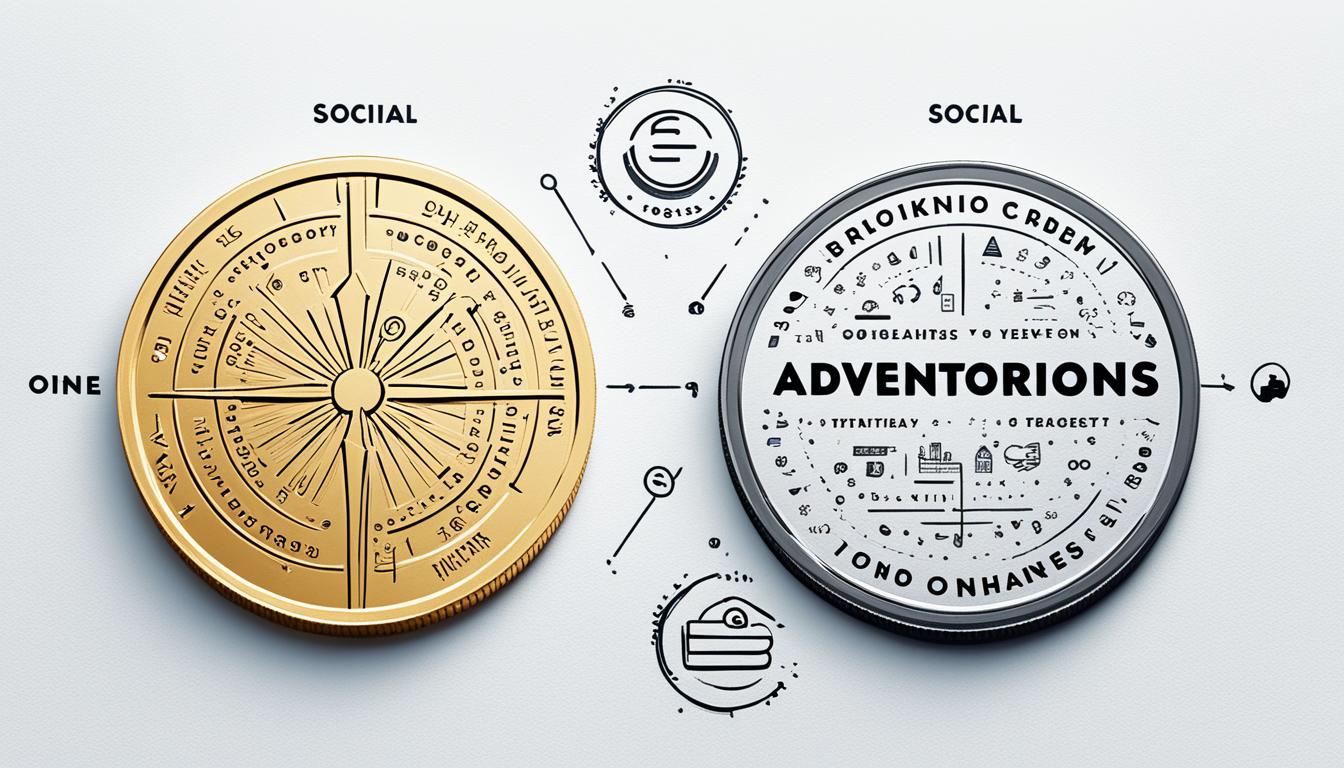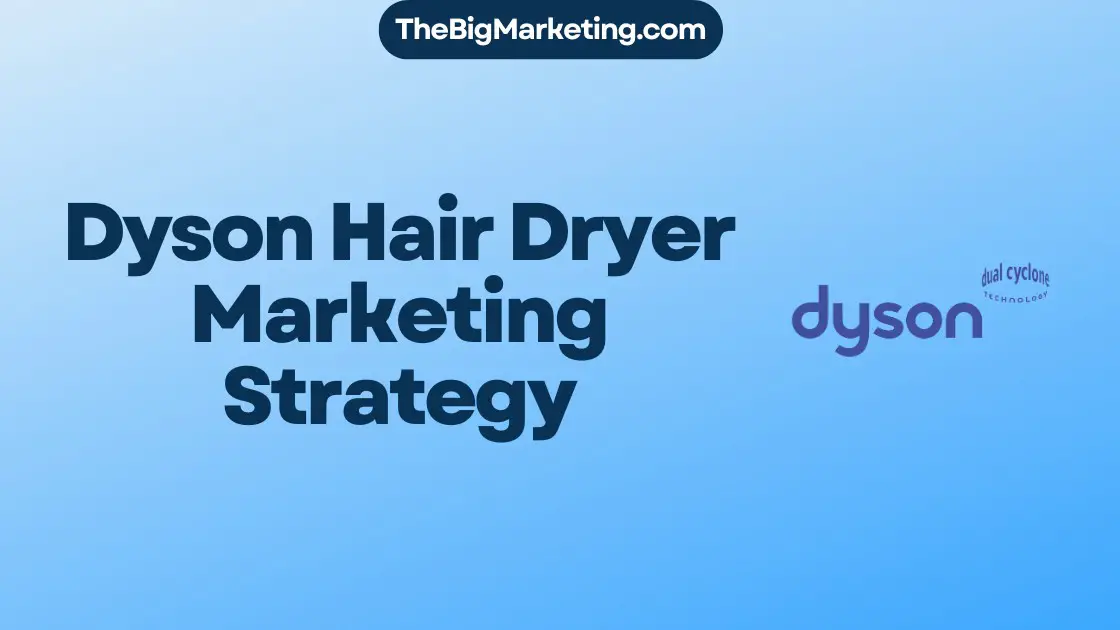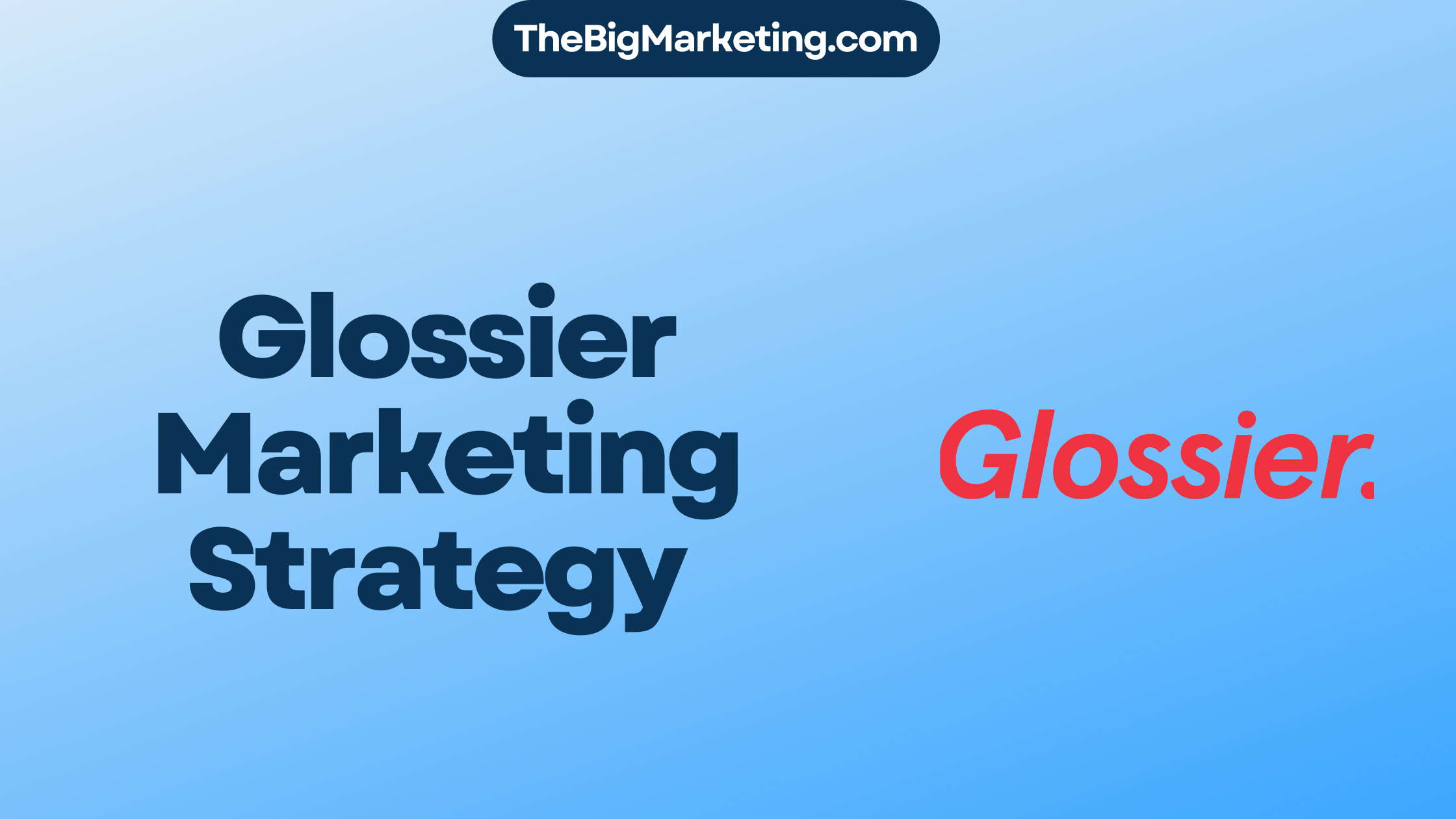Oral-B, owned by Proctor and Gamble, is a renowned brand in the oral hygiene industry. With a strong focus on dental hygiene branding and consumer behavior analysis, Oral-B has established itself as a trusted brand among consumers since 1950. Their innovative products, including technologically advanced electric toothbrushes, have gained the endorsement of dentists, further solidifying their market position.
However, in a highly competitive oral care industry, Oral-B faces challenges in increasing market penetration, especially in rural areas. To overcome these challenges, Oral-B has adopted a comprehensive marketing strategy, encompassing online dental campaigns, toothbrush advertising tactics, and promotional strategies to promote their dental products effectively.
In this case study, we will delve into Oral-B’s marketing strategy for 2024, analyzing their approach to market segmentation, dental product promotion strategies, and the usage of Oral B promotions to attract potential consumers. By understanding the key elements of Oral-B’s marketing strategy, we can gain valuable insights into the dental hygiene industry and identify future growth opportunities.
Key Takeaways:
- Oral-B is an established brand in the oral hygiene industry, known for its innovative products and endorsements from dentists.
- They face competition in the oral care industry and need to focus on increasing market penetration, particularly in rural areas.
- Online dental campaigns, toothbrush advertising tactics, and promotional strategies play a crucial role in Oral-B’s marketing strategy.
- By analyzing consumer behavior and adopting market segmentation, Oral-B can effectively promote their dental products.
- The utilization of Oral B promotions enables Oral-B to attract potential consumers and increase brand awareness.
The Electric Toothbrush Market
The electric toothbrush market is highly fragmented, with numerous brands competing for market share. In this competitive landscape, differentiation is crucial for survival. Hence, companies like Oral-B strive to offer technologically advanced products that stand out from the rest.
Technological advancements have been a significant driver of market growth. Electric toothbrushes equipped with advanced features such as pressure sensors, timers, and Bluetooth connectivity have gained popularity among consumers seeking improved oral hygiene practices. These innovative products not only provide convenience but also address specific oral care needs.
One of the fastest-growing segments in the electric toothbrush market is online sales. As consumers increasingly shift towards e-commerce platforms for their shopping needs, companies like Oral-B have recognized the importance of optimizing their marketing techniques to capture this growing online market.
Oral-B has strategically focused on search marketing to increase their online visibility. By leveraging search engine optimization (SEO) tactics, they have optimized their website and product listings to appear prominently in search results, thereby driving organic traffic to their online store.
Furthermore, Oral-B has a valuable advantage in collecting consumer data through their mobile app. This data provides valuable insights into consumer preferences, allowing them to tailor their marketing efforts more effectively.
However, there are areas where Oral-B can improve their marketing strategy in the electric toothbrush market. For instance, they do not have a dedicated blog or user reviews on their website, which are crucial elements for building trust and engagement with potential customers. Additionally, their social media presence requires enhancement to create a stronger online community around their brand.
Opportunities exist for Oral-B in the electric toothbrush market. They can encourage users to generate authentic content, such as reviews, testimonials, and usage demonstrations, which can greatly contribute to increasing brand awareness and credibility. A strong focus on corporate social responsibility (CSR) campaigns can also help establish Oral-B as a socially conscious brand in the eyes of their target audience.
To reach their target audience more effectively, Oral-B should consider diversifying their presence on social networking sites that are popular among their target demographic. By targeting the right platforms, they can improve brand visibility and engage potential customers in meaningful conversations about oral care and hygiene.
Website glitches and low engagement are areas that need improvement for Oral-B. They should prioritize resolving any technical issues, ensuring a smooth and user-friendly online experience. Additionally, optimizing their website’s content and design to encourage higher engagement levels will help in driving conversions and fostering brand loyalty.
Overall, the electric toothbrush market presents both opportunities and challenges. By leveraging technologically advanced products and implementing optimal marketing techniques, companies like Oral-B can position themselves for success in this rapidly growing industry.
SEO and Website Optimization
Effective search engine optimization (SEO) is essential for improving website performance and attracting more organic traffic. Oral-B has implemented a strong SEO strategy that focuses on search marketing and building authority through link building.
To further enhance their online visibility and reach, Oral-B should prioritize keyword research to identify the most relevant and high-ranking keywords in the oral care industry. By incorporating these keywords naturally into their website content, including titles, descriptions, and headings, Oral-B can improve keyword consistency and increase their chances of ranking higher in search engine results.
Creating content-rich pages with valuable information and engaging visuals is key to driving user engagement and organic traffic. Oral-B can leverage their expertise in the oral care industry to provide informative articles, how-to guides, and product comparisons. By addressing the pain points and informational needs of their target audience, Oral-B can establish themselves as a trusted source of oral hygiene knowledge.
Benchmarking SEO efforts using tools like Google Analytics can provide valuable insights into the website’s performance, allowing Oral-B to track key metrics like organic traffic, bounce rate, and conversion rates. Analyzing user journey data from pay-per-click (PPC) advertising campaigns can provide additional insights into user behavior and inform website optimization strategies.
It’s important for Oral-B to optimize their website for performance by addressing any technical issues that may hinder user experience. Heavy pages with a low volume of text content can negatively impact page loading speed, which can lead to higher bounce rates. Optimizing images, leveraging browser caching, and minimizing unnecessary scripts can significantly improve website performance.
The Importance of Call-to-Action (CTA)
An often-overlooked aspect of website optimization is ensuring that call-to-action (CTA) buttons and links are working properly. CTA glitches, such as broken or unresponsive buttons, can frustrate users and impede the conversion process. It’s crucial for Oral-B to regularly test and monitor their CTAs to ensure a seamless user experience.
Example: Keyword Research and Optimization
Let’s take a look at how proper keyword research and optimization can benefit Oral-B’s website performance:
| Keyword | Search Volume | Competition | Optimization Level |
|---|---|---|---|
| Oral B toothbrush | 10,000 | High | Optimized |
| Electric toothbrush | 20,000 | Medium | Optimized |
| Best toothbrush for gum health | 2,000 | Low | Not Optimized |
| How to choose the right toothbrush | 5,000 | Low | Not Optimized |
| Oral-B toothpaste | 8,000 | High | Optimized |
By optimizing their website content for keywords with high search volume and low competition, Oral-B can increase their visibility in search engine results and attract more organic traffic. It’s important to prioritize optimization efforts for keywords that align with their target audience’s search intent.
Social Media and Content Marketing
Oral-B has recognized the immense potential of social media platforms like Facebook and YouTube for sharing engaging content. However, to fully capitalize on the power of social media, Oral-B needs to enhance its presence on Google+, LinkedIn, Twitter, and Instagram. By establishing a strong presence across all major social media platforms, Oral-B can effectively engage with a larger audience and drive brand awareness.
Social influencers have become a critical component of modern marketing strategies. Collaboration with popular influencers who resonate with Oral-B’s target audience can significantly boost product reach and credibility. The key is to identify influencers who align with Oral-B’s values, product offerings, and brand identity to create authentic and impactful collaborations.
User-generated content (UGC) has emerged as a powerful marketing tool, enabling brands to build authenticity and foster a sense of community among their customers. Oral-B can encourage its customers to share their experiences, reviews, and videos, showcasing the effectiveness of their products through real-life testimonials. By leveraging UGC, Oral-B can amplify its brand messaging and encourage consumer participation in their marketing campaigns.
Engaging content is essential for capturing and retaining the attention of online audiences. Oral-B should focus on creating informative and entertaining content that educates and entertains its target audience. Whether it’s through interactive quizzes, how-to videos, or expert interviews, engaging content can enhance brand loyalty and help build a digital community of loyal customers.
Additionally, Oral-B should consider expanding its advertising efforts to digital TV platforms such as Hulu and Sling. With the rise of cord-cutting and the popularity of streaming services, digital TV advertising provides a unique opportunity to reach a wider audience and increase brand visibility.
In summary, a well-executed social media and content marketing strategy can significantly enhance Oral-B’s brand presence and engagement with its target audience. By optimizing its social media platforms, collaborating with social influencers, leveraging user-generated content, creating engaging content, and exploring digital TV advertising, Oral-B can create a strong digital footprint and unlock new growth opportunities for the brand.
CRM and Consumer Data
Integrating CRM (Customer Relationship Management) systems and consumer data is crucial for Oral-B’s marketing strategy. By creating a single customer view through data integration, Oral-B can enhance personalization and triggering, driving customer engagement and loyalty. Utilizing behavioral targeting and marketing automation tools, such as Salesforce, can further refine marketing efforts and optimize customer interactions.
One key aspect of effective CRM strategy is digital branding and touchpoint integration. By ensuring a consistent and seamless customer experience across all online platforms, Oral-B can create a cohesive brand image and strengthen customer relationships.
The Benefits of CRM Integration:
1. Personalization: Integrating consumer data allows Oral-B to understand individual customer preferences, enabling them to tailor marketing messages and offers accordingly. Personalization can significantly impact customer satisfaction and conversion rates.
2. Behavioral Targeting: By analyzing consumer behavior and purchase patterns, Oral-B can target specific customer segments with relevant and timely marketing messages. This targeted approach increases the effectiveness of marketing campaigns and maximizes ROI.
3. Marketing Automation: Automating marketing processes through platforms like Salesforce streamlines campaign management, improves efficiency, and enables personalized customer interactions at scale. Automation allows Oral-B to deliver the right message to the right customer at the right time, enhancing customer engagement and driving revenue.
CRM Integration Benefits
| Benefits | Description |
|---|---|
| 1. Personalization | Tailoring marketing messages to individual customer preferences. |
| 2. Behavioral Targeting | Targeting specific customer segments based on behavior and purchase patterns. |
| 3. Marketing Automation | Automating marketing processes for personalized, timely customer interactions. |
By effectively integrating consumer data, Oral-B can enhance its CRM strategy and leverage the power of personalization, behavioral targeting, and marketing automation. This comprehensive approach enables Oral-B to optimize customer engagement, improve conversion rates, and build lasting customer relationships.
Promotional Strategies and Couponing
One effective way for Oral-B to attract and engage customers is through promotional strategies and couponing. By offering enticing discounts and coupons, they can leverage consumer behavior preferences and encourage more people to purchase their oral care products. Consumers often gravitate towards products that have promotions or are on sale, and coupons can directly influence their purchasing decisions.
Analysis of toothbrush brand preferences is crucial for Oral-B to tailor their promotional strategies effectively. Understanding the preferences and behaviors of their target audience will allow them to create promotions that align with their customers’ needs and desires. By focusing on the specific features and benefits that consumers value the most, Oral-B can position themselves as the preferred choice in the market.
Oral-B can also explore partnership opportunities with dentists and dental insurance companies to further penetrate the market. Collaborating with dental professionals can lend credibility to their brand and increase trust among consumers. Additionally, partnering with dental insurance companies can provide unique promotional opportunities, such as exclusive discounts or bundled offers, to their policyholders. These partnerships can help Oral-B reach a wider audience and establish a strong foothold in the oral care industry.
Overall, implementing promotional strategies and couponing can significantly enhance Oral-B’s marketing efforts. By understanding consumer behavior, analyzing brand preferences, and collaborating with key stakeholders, Oral-B can effectively engage customers and increase their market share.
Innovation and Product Differentiation
Oral-B has a long-standing reputation for product innovation, consistently pushing the boundaries in the dental care industry. Their electric toothbrushes, featuring cutting-edge technologies like 3D Action Tech and Bluetooth Tech, have revolutionized oral care routines.
To further expand their product portfolio, Oral-B has the opportunity to venture into other dental care products, such as teeth whitening kits. Teeth whitening is a popular trend, and offering a trusted and reliable solution can help Oral-B capture a substantial share of this market.
Another avenue for growth lies in targeting new market segments, particularly kids oral care. By developing engaging and child-friendly dental care products, Oral-B can tap into the needs and preferences of parents who prioritize their children’s oral health. This strategic expansion can not only increase their customer base but also establish brand loyalty from an early age.
As Oral-B continues to thrive, their focus on product differentiation remains paramount. By identifying unmet consumer needs and developing innovative solutions, they can continuously provide superior oral care experiences. This commitment to innovation and differentiation reinforces Oral-B’s position as a market leader and drives the brand’s future growth.
Oral B Dental Care Product Range
| Product Category | Description |
|---|---|
| Electric Toothbrushes | Utilizing advanced technologies like 3D Action Tech and Bluetooth Tech for an effective and personalized brushing experience. |
| Teeth Whitening Kits | Bringing professional-level teeth whitening solutions to consumers, offering effective and safe results. |
| Flossers and Interdental Cleaners | Providing convenient and efficient ways to clean between teeth, promoting optimal oral hygiene. |
| Toothpastes and Mouthwashes | Offering a range of oral care products with different formulations to cater to specific dental needs. |
SWOT Analysis of Oral-B
When conducting a SWOT analysis of Oral-B, it is important to assess the brand’s strengths, weaknesses, opportunities, and threats. This analysis provides valuable insights into how Oral-B can position itself in the highly competitive oral care industry and maximize growth potential.
Strengths
- Innovation: Oral-B is known for its innovative products, such as electric toothbrushes with advanced technology, which set them apart from competitors.
- Good product research: Oral-B invests in extensive research and development to ensure their products meet consumer needs and deliver optimal oral care.
- Clear positioning: The brand has a strong identity and clear positioning in the market as a trusted and recommended brand by dentists.
- Testimonials from dentists: Oral-B’s collaboration with dental professionals enhances brand credibility and drives consumer trust.
Weaknesses
- High competition: Oral-B faces intense competition from other brands in the oral care industry, necessitating continuous efforts to maintain market share.
- Low awareness in certain product categories: While Oral-B has a strong reputation in electric toothbrushes, awareness may be lower in other oral care product categories.
- Dental liability: The brand carries the responsibility to ensure their products are safe and effective for consumers, which can be challenging in a highly regulated industry.
- Low market penetration: Oral-B may face challenges in penetrating untapped markets and increasing its market share.
Opportunities
- Involvement in personal care products: Oral-B can expand its product portfolio by branching out into personal care products related to oral hygiene, catering to a wider range of consumer needs.
- Differentiate advertising methods: Oral-B has the opportunity to implement unique advertising strategies to stand out in a crowded market, such as leveraging digital platforms and social media influencers.
- Tap into unexploited markets: The brand can explore untapped market segments, such as targeting specific demographics or geographic regions that have a demand for quality oral care products.
Threats
- Aggressive competition: Oral-B faces constant challenges from competitors who continuously introduce new products and marketing strategies to capture market share.
- Regular introduction of new products by competitors: The oral care industry is dynamic, with competitors frequently launching new products, creating the need for Oral-B to stay ahead of the curve.
Understanding the SWOT analysis of Oral-B helps to identify areas where the brand can leverage its strengths, address weaknesses, capitalize on opportunities, and mitigate threats. Utilizing these insights, Oral-B can refine its marketing strategy, innovate new products, and develop strategic partnerships to maintain its leadership position in the oral care industry in the years to come.
Market Segmentation and Target Audience
Oral-B understands the importance of targeting a wide range of customers who prioritize good oral health care. Their marketing strategy primarily focuses on individuals who seek superior technology and innovation in their oral care products. By offering products with advanced features and cutting-edge technology, Oral-B effectively caters to this target market’s needs and preferences.
Additionally, Oral-B recognizes the importance of targeting specific customer demographics to expand their market reach. For instance, they have identified an opportunity to target families dealing with oral issues. By offering specialized oral care products designed for families, Oral-B can effectively address the unique needs and challenges faced by this specific demographic.
Furthermore, Oral-B aims to capture the attention of young adults interested in personal care products. Leveraging consumer insights, Oral-B has identified the growing demand for oral care solutions among young adults who are actively seeking products that align with their personal care routines. By understanding this consumer segment’s preferences and habits, Oral-B can develop targeted marketing campaigns and product innovations to engage and capture their interest.
Customer Demographics and Insights
Consumer insights play a vital role in shaping Oral-B’s marketing strategy and understanding the needs and preferences of their target audience. Through extensive market research and analysis, Oral-B has discovered that consumers highly value recommendations from dentists when it comes to oral care products. Dentist endorsements give consumers confidence in the brand and reassurance that they are purchasing products that meet their specific oral care needs.
Furthermore, Oral-B understands that consumers are constantly seeking products that address their unique oral care needs. By focusing on consumer insights and conducting in-depth research, Oral-B can tailor their product offerings to cater to different oral issues, such as sensitive teeth, gum problems, or plaque buildup. This customer-centric approach enables Oral-B to develop products that meet the diverse needs of their target audience.
In summary, Oral-B’s market segmentation strategy revolves around targeting a wide range of customers interested in superior oral health care. By understanding customer demographics and leveraging consumer insights, Oral-B can develop innovative products and tailor their marketing efforts to effectively engage and capture the interest of their target audience.
Conclusion
Oral-B’s marketing strategy holds immense potential in shaping the future of the dental hygiene industry. Through their focus on innovation, differentiation, and targeted consumer engagement, Oral-B is poised to grow its brand and capture a larger market share. Expanding into personal care products, optimizing online campaigns, and leveraging social media influencers present significant opportunities for brand growth.
To stay ahead of the competition and continue leading the oral care industry, Oral-B must maintain a strong emphasis on consumer insights and satisfaction. By understanding consumer preferences and addressing their specific oral care needs, the brand can continue to drive innovation and offer products that exceed expectations.
The dental hygiene industry is evolving rapidly, with future trends indicating a growing importance of technology, convenience, and personalization. Oral-B is well-positioned to capitalize on these trends and further enhance their market presence. By continuously adapting their marketing strategy and seizing brand growth opportunities, Oral-B can solidify its position as a trusted leader in the dental hygiene industry.







